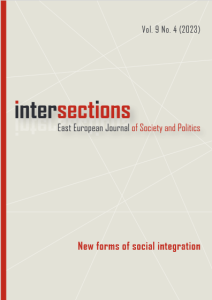The role of capital income in the Hungarian income
distribution from 2007 to 2021
Judit Krekó – Csaba G. Tóth
Intersections – Vol. 10 No. 3 (2024):
Unsettling Gender, Sexuality, and the European East/West Divisions
Published: 2024-12-24
Abstract
Capital income represents a significant and growing share of total income at the aggregate level in most countries. However, the link between capital income and overall income inequality is not clear, as it is influenced by the distribution of capital income among individuals and its overlap with labour income. Using administrative personal income tax data, we explore the characteristics of taxable capital income in Hungary for the period from 2007 to 2021, and assess its role in overall income inequality. Capital income, which accounted for 8 to 12% of total taxable income in the period under review, was distributed among just 5 to 7% of taxpayers. The highest income percentile held 74% of capital income, while the share of the highest income decile exceeded 90% in 2021. Given its concentration at the top of the total income distribution, capital income significantly increased income inequality. By decomposing the change in inequality measured by the Gini index, we show that although the increase in overall income inequality is largely attributable to the growing concentration of labour income, capital income also exerted a major influence during this period. In our simulation, we demonstrate that an increase in the share of capital income within total income would lead to a notable increase in inequality.
Keywords: income inequality, capital income, personal income tax, Gini index



